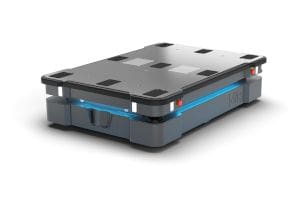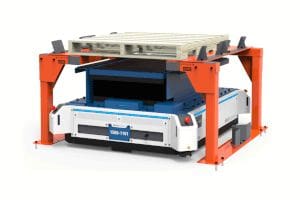Autonomous Mobile Robots (AMRs) are transforming the way that warehouses and distribution centers operate. One warehouse automation application where these robots can be especially useful is cross-docking. In this article, we’ll discuss what cross-docking is, why AMRs are well-suited to this task, and how they can offer significant material handling benefits over human-operated forklifts.
What is Cross-Docking?
Cross-docking is a supply chain management technique where goods are received at a warehouse or distribution center and immediately shipped out without being stored. This requires rapid and efficient handling of each incoming pallet, which is where AMRs can play a critical role.
Benefits of Autonomous Mobile Robots for Cross Docking Operations
AMRs are an ideal solution for cross docking operations because they can move quickly and efficiently between docks, loading and unloading products with ease. Because they are autonomous, they can be programmed to operate 24/7, ensuring that cross-docking can take place around the clock. This means that products can be shipped out as soon as they are received, reducing the time that they are held in storage and thus cutting costs for the company.
Another benefit of using AMRs for cross-docking is that they can help to save on labor costs. While human-operated forklifts are still commonly used in many smart warehouse operations, they are becoming increasingly expensive to operate due to the need to pay drivers and maintain the equipment. By using AMRs, companies can reduce the number of workers they need, cutting down on labor costs and improving overall efficiency.
Safety Benefits of AMRs
In addition to these cost savings, AMRs are also safer than human-operated forklifts. Because they are programmed to move in specific patterns and at set speeds, they are less likely to cause accidents. They can also be programmed to avoid obstacles and slow down or stop if they detect a person or object in their path. This makes them an ideal solution for cross-docking applications where safety is a major concern.
Are AMRs Safer Than Human-Driven Forklifts?
Autonomous robots can be safer than human-driven forklifts in many ways. As mentioned, they are programmed to move in specific patterns and at set speeds, reducing the risk of accidents. They are also equipped with sensors and cameras that allow them to detect obstacles and people, and to slow down or stop if necessary. Further, AMRs don’t suffer from fatigue or distractions, and will not break safety rules, as can sometimes be the case with warehouse workers.
Thus, AMRs can be particularly attractive in distribution centers where safety is a major concern.
Summary of AMR Cross-Docking Benefits
In conclusion, the use of the autonomous mobile robot for cross docking operations in warehouses and distribution centers offers significant benefits over traditional human-operated forklifts. By improving efficiency, reducing labor costs, and enhancing safety, AMRs can help companies to improve inventory management and to operate more effectively and cost-efficiently.
Contact CSSI For Help with Cross-Docking
If you’re interested in implementing AMRs in your warehouse, manufacturing facility or distribution center for cross-docking applications, speak to CSSI – our experienced consultants can help you to select the right warehouse robots for your specific needs and improve your warehouse management today. Please contact CSSI to learn more.



